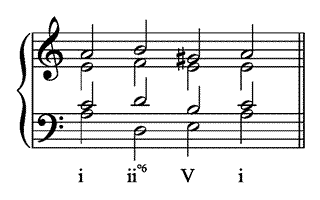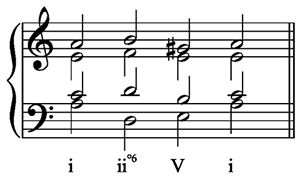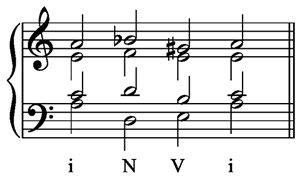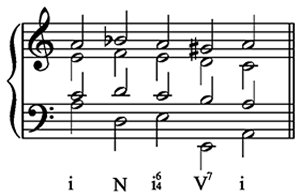Harmonic Functions : What is a Neapolitan Sixth Chord?
In the following image, we show the i - iio6 - V - i chords in the key of A minor. By lowering the chord's root by a half-step (in this case, the B becomes a B flat) we get a Neapolitan sixth chord. It receives the name sixth because it is commonly used in first inversion.

In traditional harmony, chords in first inversion are sometimes called sixth chords. By lowering the root note, we increase the harmonic tension, strengthen its subdominant function and its resolution to the dominant chord. The lowered note descends a diminished third to the third of the dominant chord. Listen to both examples:
 |
|
 |
Very often the Neapolitan Sixth chord is followed by the tonic chord in second inversion before the dominant chord.
 |
